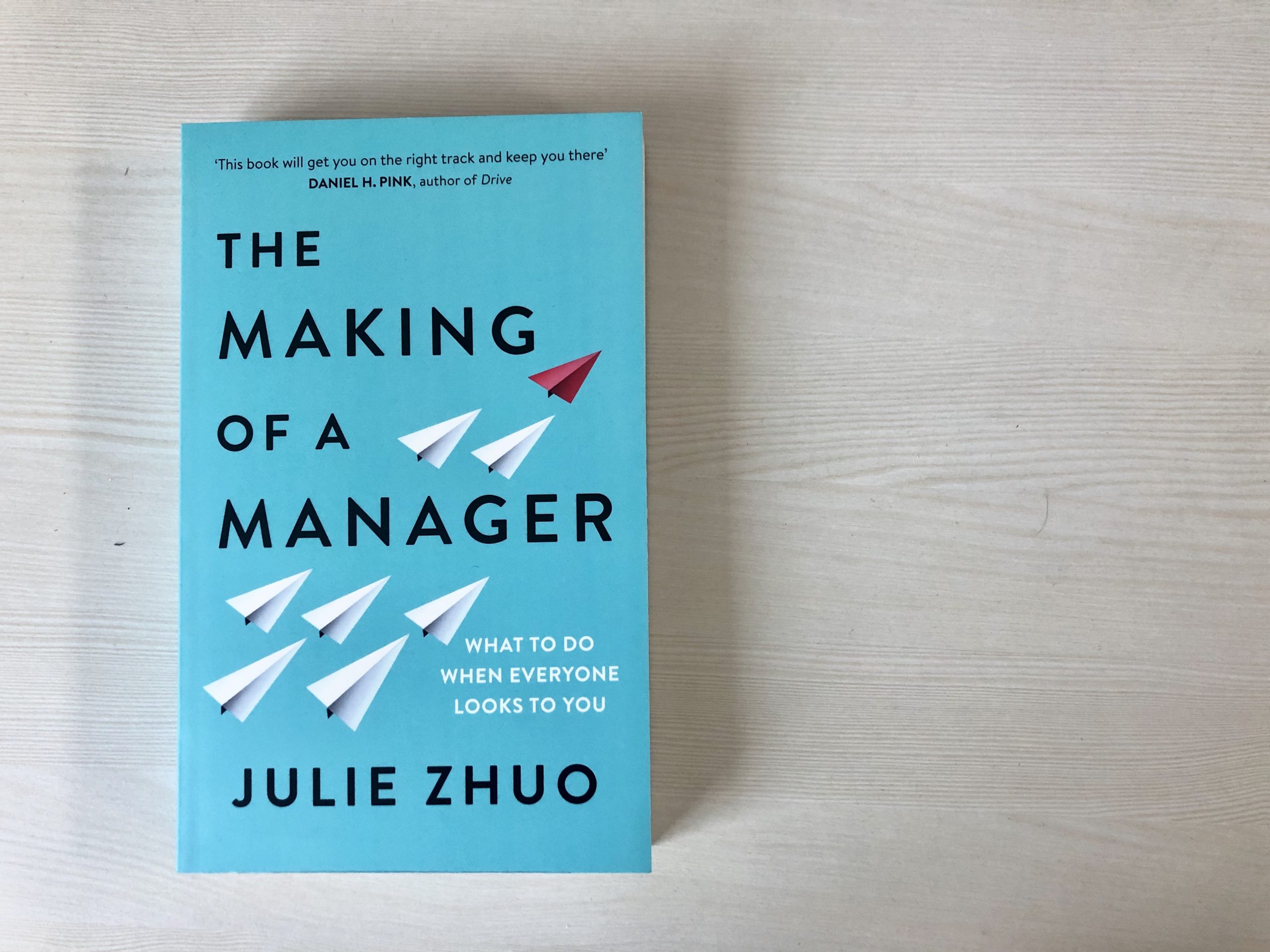Leading a team for the first time is a daunting prospect. In The Making of a Manager, top tech executive Julie Zhuo presents a bold guide to getting respect – and results – in your new managerial role. In this extract, she explains what the three things are every manager thinks about all day.
J. Richard Hackman, the leading scholar of teams, spent forty years trying to answer this question. He studied the ways professionals work together in hospitals, in symphony orchestras, and inside the cockpits of commercial airliners. One of his conclusions is that making a team function well is harder than it looks. “Research consistently shows that teams underperform, despite all the extra resources they have,” he says. “That’s because problems with coordination and motivation typically chip away at the benefits of collaboration.”
Hackman’s research describes five conditions that increase a team’s odds of success: having a real team (one with clear boundaries and stable membership), a compelling direction, an enabling structure, a supportive organizational context, and expert coaching.
My own observations are similar, and I’ve come to think of the multitude of tasks that fill up a manager’s day as sorting neatly into three buckets: purpose, people, and process.
The purpose is the outcome your team is trying to accomplish, otherwise known as the why. Why do you wake up and choose to do this thing instead of the thousands of other things you could be doing? Why pour your time and energy into this particular goal with this particular group of people? What would be different about the world if your team were wildly successful? Everyone on the team should have a similar picture of why does our work matter? If this purpose is missing or unclear, then you may experience conflicts or mismatched expectations.
For example, let’s say your vision is to get a lemonade stand on every block, starting first in your city and then expanding throughout the country. However, your employee Henry is under the impression that your stand ought to be a popular hangout spot for the neighbors. He’ll start doing things that you think are unimportant or wasteful, like buying a bunch of lawn chairs or trying to serve pizza along with lemonade. To prevent these misalignments, you’ll need to get him and the other members of your team on board with what you truly care about.
At the same time, you can’t simply demand that everyone believe in your vision. If Henry thinks your grand plan of “a lemonade stand on every block” is stupid, he won’t be motivated to help you see it through. He might decide instead to join a venture he cares more about, like that pizza-and-pool parlor down the street.
The first big part of your job as a manager is to ensure that your team knows what success looks like and cares about achieving it. Getting everyone to understand and believe in your team’s purpose, whether it’s as specific as “make every customer who calls feel cared for” or as broad as “bring the world closer together,” requires understanding and believing in it yourself, and then sharing it at every opportunity—from writing emails to setting goals, from checking in with a single report to hosting large-scale meetings.
The next important bucket that managers think about is people, otherwise known as the who. Are the members of your team set up to succeed? Do they have the right skills? Are they motivated to do great work?
If you don’t have the right people for the job, or you don’t have an environment where they can thrive, then you’re going to have problems. For example, say Eliza doesn’t precisely measure the right amount of lemon juice, sugar, and water for your secret formula, or Henry can’t be bothered to greet customers politely, or you’re terrible at planning. Your lemonade stand will suffer. To manage people well, you must develop trusting relationships with them, understand their strengths and weaknesses (as well as your own), make good decisions about who should do what (including hiring and firing when necessary), and coach individuals to do their best.
Finally, the last bucket is process, which describes how your team works together. You might have a superbly talented team with a very clear understanding of what the end goal is, but if it’s not apparent how everyone’s supposed to work together or what the team’s values are, then even simple tasks can get enormously complicated. Who should do what by when? What principles should govern decision-making?
For example, say it’s Henry’s job to pick up lemonade ingredients from the store and it’s Eliza’s job to make the lemonade. How will Henry know when he needs to make a run? How will Eliza find the supplies? What should happen if lemons run out on a particularly hot day? If there isn’t a predictable plan, Henry and Eliza will waste time coordinating handoffs and dealing with the inevitable mistakes that arise.
Often, people have an allergic reaction to the word process. For me, it used to conjure up the feeling of glacial progress. I imagined myself flailing around in huge stacks of paperwork, my calendar filled with tedious meetings. In a processless world, I imagined myself free to do whatever was needed to make things happen quickly, with no red tape, no barriers, no overhead.
There’s some truth to this. We’ve already established that when you are working by yourself, you get to make all the decisions. You are limited only by how fast you can think and act.
In a team setting, it’s impossible for a group of people to coordinate what needs to get done without spending time on it. The larger the team, the more time is needed. As talented as we are, mind reading is not a core human competency. We need to establish common values within our team for how we make decisions and respond to problems. For managers, important processes to master include running effective meetings, future proofing against past mistakes, planning for tomorrow, and nurturing a healthy culture.
Purpose, people, process. The why, the who, and the how. A great manager constantly asks herself how she can influence these levers to improve her team’s outcomes. As the team grows in size, it matters less and less how good she is personally at doing the work herself. What matters more is how much of a multiplier effect she has on her team. So how does this work in practice?
Suppose I can personally sell twenty cups of lemonade per hour. Suppose Henry and Eliza can each sell fifteen cups of lemonade per hour.
Suppose we all worked four hours a day. Because I’m the best among us at selling lemonade, it might seem like a good use of my time to man the stand. I’d sell eighty cups a day, and Henry and
Eliza would each sell sixty cups. My contribution would be 40 percent of our total sales!
But what could I do instead with my time? Suppose I spent it teaching Henry and Eliza how to become better lemonade salespeople. (Tell lemon jokes! Portion out the ingredients ahead of time! Pour cups in bulk!) If all this training took me thirty hours, that’s the equivalent of six hundred cups of lemonade that I could have sold instead; that’s a lot to give up.
And yet, if that training helps Henry and Eliza sell sixteen cups per hour instead of fifteen, it would mean an extra eight cups a day sold between the two of them. It’s a small improvement, but in less than three months, they’ll have made up those six hundred cups I didn’t sell. If they end up working at the stand for a whole year, my thirty hours spent on training instead of personally selling lemonade will mean over two thousand extra cups sold!
Training isn’t the only thing I can do. What if I used those thirty hours to recruit my neighbor Toby? He’s so persuasive he could convince a leopard to buy spots. Suppose my “lemonade stand on every block” vision inspires him to join the team. He ends up selling thirty cups of lemonade an hour, putting all our skills to shame. In a year, that means our stand will see an additional 21,000-plus cups sold!
If I spend all my time personally selling lemonade, then I’m contributing an additive amount to my business, not a multiplicative one. My performance as a manager would be considered poor because I’m actually operating as an individual contributor.
When I decided to train Henry and Eliza, my efforts resulted in slightly more lemonade output, so I had a small multiplier effect. I’m on the right track, but it’s nothing to write home about. When I hired Toby, it resulted in a much bigger multiplier effect.
Of course, the example above is very simple. In real life, it’s not so easy to quantify what you might get out of doing one thing versus another, and we’ll talk more about best practices for prioritizing your time in later chapters. But no matter what you choose, the principles of success remain the same.
Your role as a manager is not to do the work yourself, even if you are the best at it, because that will only take you so far. Your role is to improve the purpose, people, and process of your team to get as high a multiplier effect on your collective outcome as you can.














